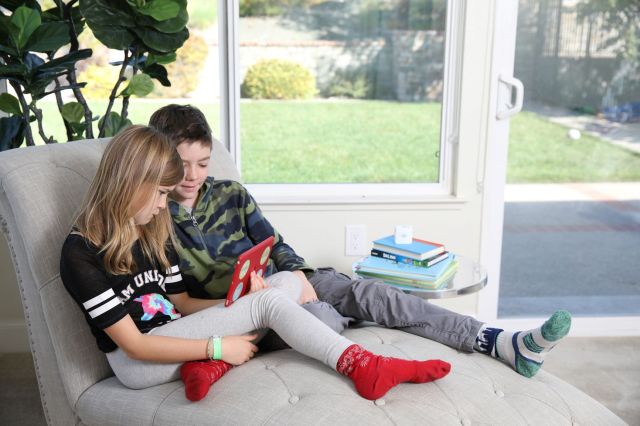Although cell phones and computers have been around for decades, digital media consumption is very different among Generation Z, compared with Generation X and even Millennials. Nowadays, children are surrounded by digital devices since birth and their devices are considered essentials of daily life, not just sources of occasional entertainment or educational tools.
The average age at which a child starts using their first device—2 years old—trends younger with every research study. However, exposure to the internet begins far earlier, at around three years old. As teenagers, that jumps to nine hours a day. Statistics like these concern parents about exactly what kids are experiencing on the internet.
Below are five ways to keep up with kid’s online lives and protect their online activity.
1. Educate Yourself: To ensure your children are safe online, educate yourself about existing dangers. Stay up to speed with the latest trending apps, games, social media, and websites popular with kids and teens. Be particularly aware of unsafe apps such as anonymous apps, which can be used for cyberbullying or by internet predators.
2. Open a Discussion: As children are spending the majority of their time on the internet, it is important now more than ever that you have the necessary discussion about online safety and it is never too late to start. Provide your child with information rather than a list of don’ts. Talk about the risks involved with social media. Try not to be confrontational and ask open-ended questions. Let your child know that they can come to you if they come across disturbing content and if they are being bullied.
3. Set Rules: Collaborate as a family to clarify rules and expectations around internet activity and home devices. Consider things like time limits, priority family commitments, and social engagement at home with each other. Coming up with rules as a family helps everyone be on the same page, and gives children expectations before they start using devices, so there aren’t any surprises. Rules and expectations can be compiled into a “tech contract” so they are easily accessible for all members of the family.
4. Use Parent Controls: Use a powerful parental control solution like Hub by Securly to manage and monitor their online habits. After setting a clear agreement and expectations with your children, explain to them that these are your devices, and you will review them because as parents, you only wish to keep your children healthy and safe. Hub by Securly allows you to limit your child’s internet access by turning off the internet with a tap. With the Hub, you can also put blocks and monitoring on your kids’ devices. Most kids aren’t searching for bad content. They just stumble on it but they can’t unsee what they’ve seen.
5. Be a Role Model: Oftentimes, children copy what their parents do, so it’s best to try to set a positive example for them. Not only does it help manage your own screen time, but it also sets a healthy device standard in the household. It is a good idea to enforce “screen-free time” into your daily routine, such as at dinner and during bedtime.











